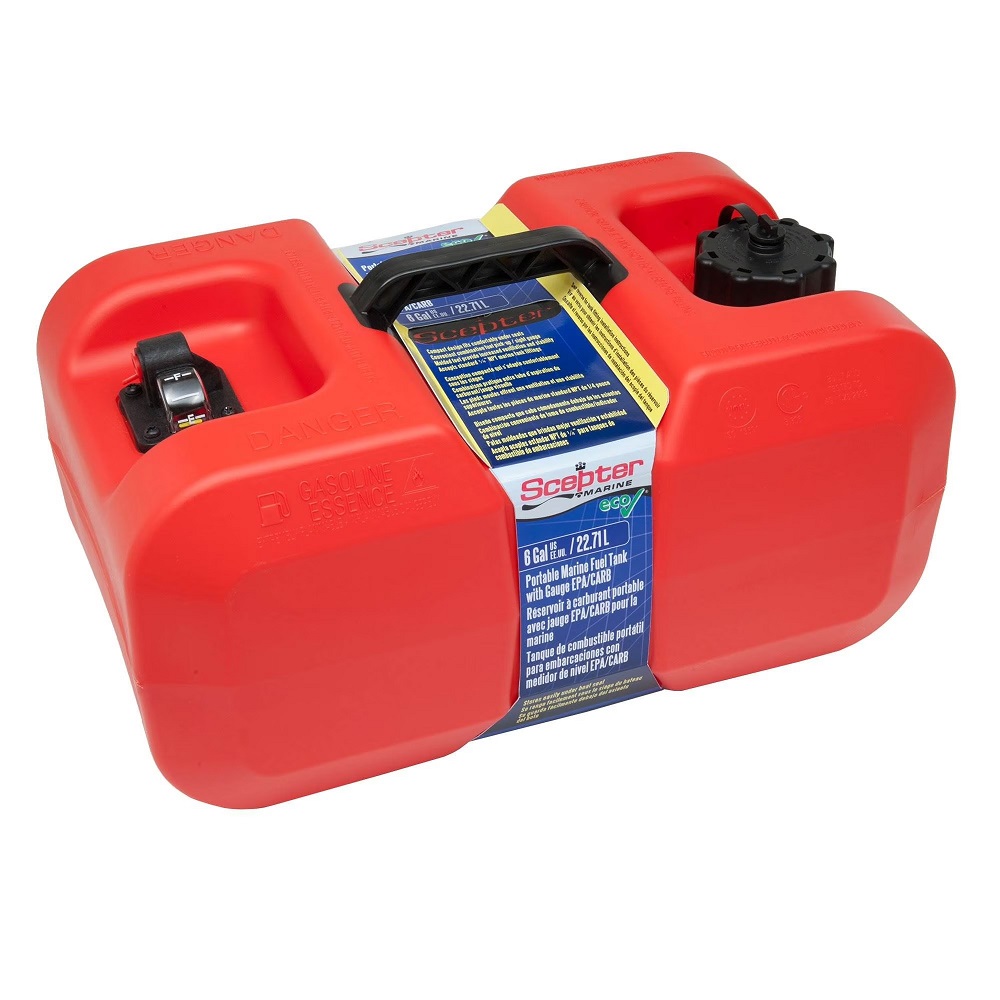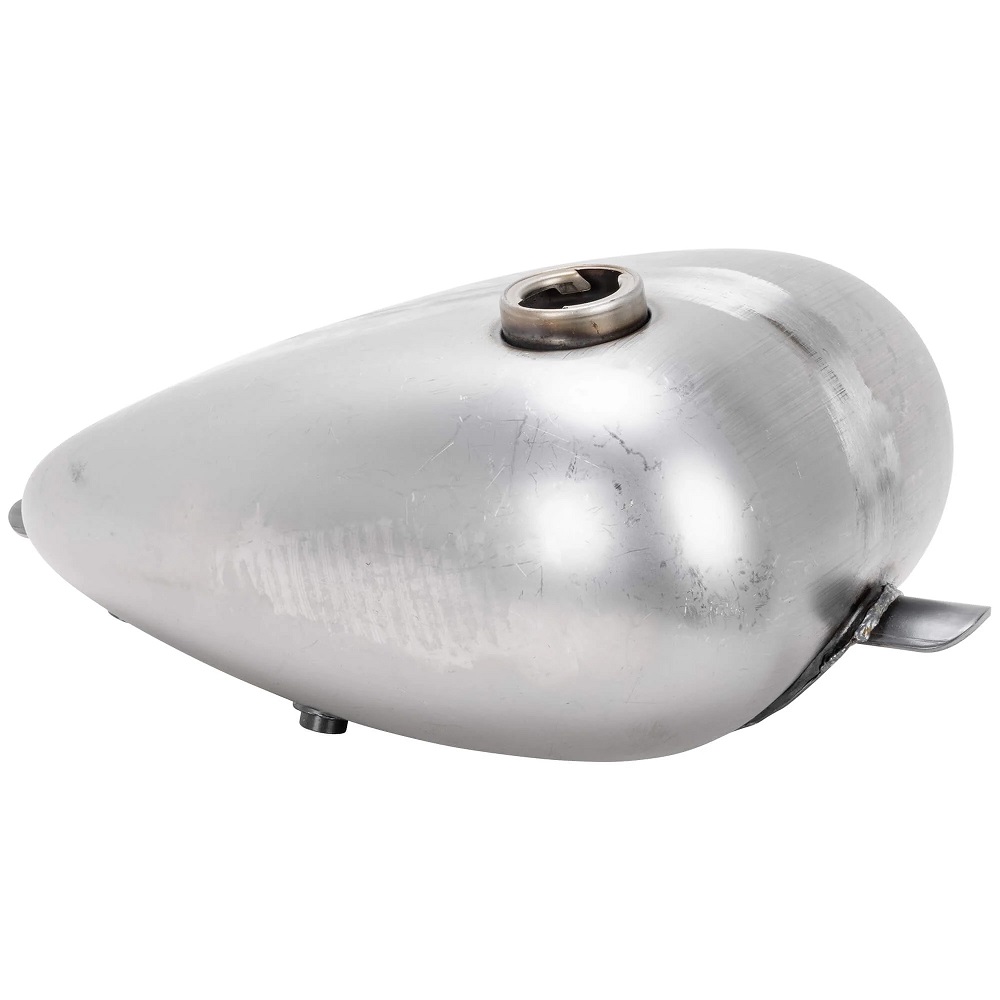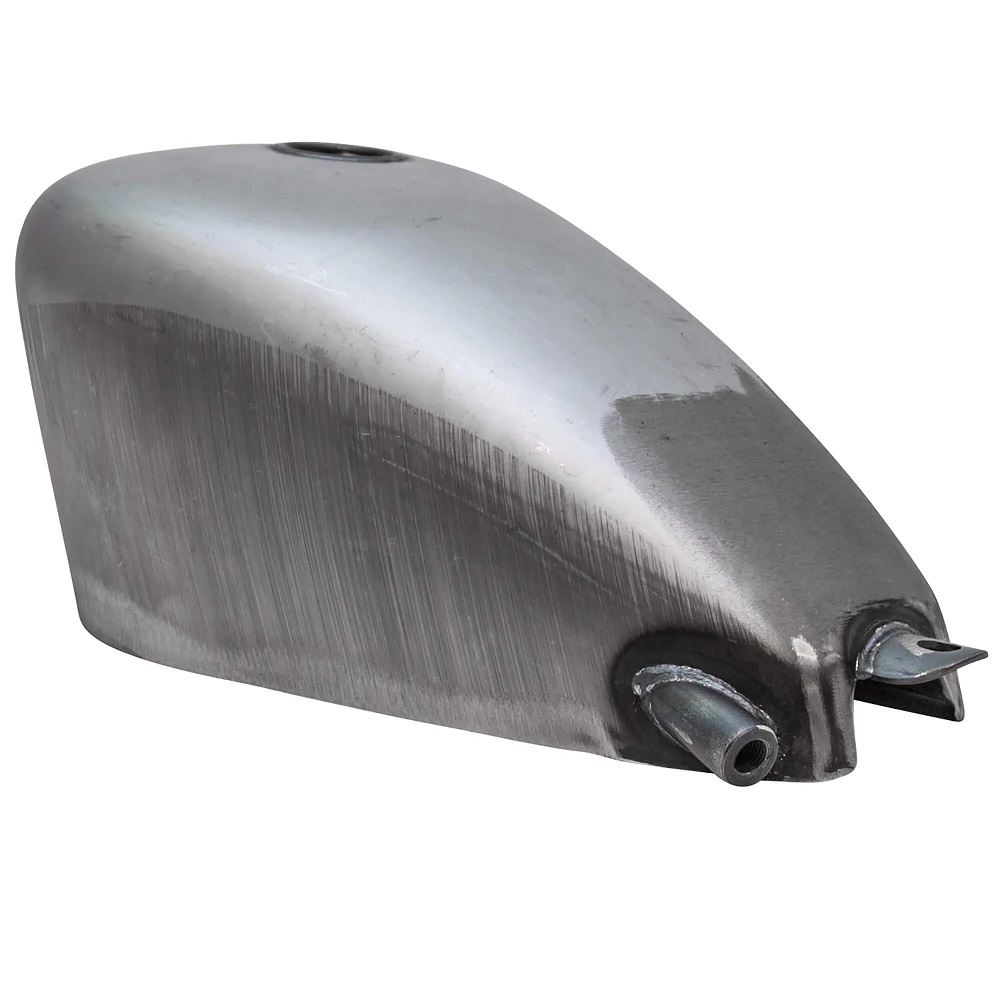Introduction to Gas Tanks
The Role of the Gas Tank in Vehicles
The gas tank is a vital component in any vehicle, serving as the storage unit for fuel. It is responsible for holding gasoline or diesel until the engine needs it, ensuring that your vehicle can operate efficiently. Understanding how gas tanks work and their different types is essential for any vehicle owner. A well-maintained gas tank not only contributes to the vehicle’s performance but also plays a crucial role in overall safety.
Importance of Proper Gas Tank Maintenance
Proper maintenance of the gas tank is essential for several reasons. First, a clean and functional gas tank ensures that the fuel is delivered smoothly to the engine. Contamination or rust in the tank can lead to fuel system issues, resulting in poor engine performance. Second, ensuring that your gas tank is in good condition minimizes the risks of leaks, which can be hazardous. Lastly, maintaining your gas tank contributes to the vehicle’s longevity and promotes overall reliability.
Purpose of This Guide
This article aims to provide a comprehensive understanding of gas tanks, including their types, functions, and maintenance practices. We will delve into various gas tank materials and designs, explain how to care for them, and identify common issues. By the end of this guide, readers will have the knowledge needed to ensure their gas tanks remain in excellent condition, supporting optimal vehicle performance.

Types of Gas Tanks
Plastic Gas Tanks
Plastic gas tanks have become a popular choice in modern vehicles. They are typically made from high-density polyethylene (HDPE), which offers many advantages. One significant benefit is that plastic tanks are lighter than their metal counterparts, resulting in better fuel efficiency. The reduced weight contributes to the overall performance of the vehicle.
Another advantage of plastic gas tanks is their resistance to corrosion. Unlike metal tanks that can develop rust and leaks over time, plastic tanks are less susceptible to such issues. This durability extends their lifespan and minimizes maintenance needs. Additionally, plastic tanks can be molded into more complex shapes, allowing for better space utilization within the vehicle’s design.
Metal Gas Tanks
Metal gas tanks have long been a staple in the automotive industry. Made from various metals, including steel and aluminum, these tanks are known for their durability and strength. Metal tanks can withstand higher pressures and external impacts, making them suitable for specific vehicle designs.
One drawback of metal gas tanks is their susceptibility to rust if the protective coating wears off. Regular inspections and maintenance are necessary to ensure that they remain rust-free. However, many manufacturers are employing newer rust-resistant coatings, extending the life of metal gas tanks. They may also offer a wider range of repair options if damage occurs, including welding and patching.
Combination Gas Tanks
In some vehicles, manufacturers opt for combination gas tanks that incorporate both plastic and metal elements. These tanks usually feature a sturdy metal casing with a plastic inner liner. This design combines the benefits of both materials, offering enhanced reliability and reduced weight.
Combination tanks are less common but provide versatility in applications where space and weight considerations are critical. They can help improve overall efficiency while maintaining durability. If considering a vehicle with a combination gas tank, it’s important to understand the specific maintenance requirements associated with those materials.

Maintenance of Your Gas Tank
Regular Inspections
Regular inspections are essential for maintaining the integrity of your gas tank. Checking for signs of leaks, corrosion, or damage should be done frequently. If you notice any fuel odors or see stains beneath the tank, it may indicate a leak. Addressing these issues promptly can prevent more significant problems later and ensure your safety.
In addition, inspect the fuel filler neck and cap. A damaged cap can lead to evaporation of fuel, resulting in decreased efficiency. Ensure that the cap seals securely and that the surrounding area remains clear of debris. Regular inspections help catch potential issues before they become serious, promoting the longevity of your gas tank.
Cleaning the Gas Tank
Over time, debris and contaminants can accumulate in the gas tank. Regular cleaning is vital, especially if you frequently use non-ethanol fuels. Sediment in the fuel can settle at the bottom of the tank, leading to clogs in the fuel system. To clean the tank, it is advisable to consult a professional service.
If you’re inclined to do it yourself, ensure proper safety procedures are followed. Start by emptying the gas tank, then rinse it with a suitable solvent or fuel system cleaner. Remove any loose residue with a soft brush to avoid scratching the interior surfaces. After cleaning, make sure to thoroughly dry the tank before refilling it. Proper cleaning boosts performance and maintains efficiency.
Fuel Additives and Treatments
Using fuel additives can promote the health of your gas tank and fuel system. These products often contain detergents that help clean fuel injectors and carburetors. Regular use can prevent build-up of carbon deposits and keep fuel lines clear.
When choosing a fuel additive, look for one that is compatible with your vehicle and address specific concerns. Some additives focus on preventing rust, while others are formulated to stabilize fuel. Always follow the manufacturer’s instructions to ensure proper usage. Incorporating fuel additives into your maintenance routine provides additional protection for your gas tank and engine.

Common Issues with Gas Tank
Fuel Leaks
Fuel leaks are one of the most common issues that can arise with gas tanks. Several factors can contribute to leaks, including corrosion, impact damage, or old age. A leaking gas tank is a serious safety concern. If you notice fuel odors or see wet spots around the tank, it is essential to address the problem immediately.
If a leak is detected, avoid using the vehicle until repairs can be made. Consult a professional mechanic to assess the damage and recommend appropriate repair methods. In some cases, a patch might suffice, while other situations may require a full tank replacement. Regular inspections can help catch leaks early and prevent more severe consequences.
Rust and Corrosion
Rust and corrosion are significant issues that primarily affect metal gas tanks. A lack of protective coatings or exposure to moisture can lead to the deterioration of the metal surface. This deterioration often results in leaks or reduced tank integrity and can also lead to fuel contamination.
To combat rust, keeping the tank clean and ensuring it is filled with fresh fuel can help. Additionally, regular inspections will help identify rust spots early. If your tank shows signs of corrosion, consider seeking professional cleaning and preventive treatments. Taking proactive measures ensures your gas tank remains in good condition.
Poor Fuel Quality
Poor fuel quality can lead to various problems in your motorcycle, including issues with the gas tank. Contaminated or low-quality fuel can create build-up and residue in the tank and fuel system, affecting engine performance. This issue is especially prevalent when using fuel from unknown or inconsistent sources.
To avoid problems related to fuel quality, always refuel at reputable gas stations. Consider using fuel additives to help stabilize fuel and improve the overall quality. Regular maintenance of the gas tank and fuel system helps mitigate the effects of poor fuel quality, ensuring smooth operation.

Choosing the Right Gas Tank for Your Vehicle
Assessing Your Needs
When choosing a gas tank for your motorcycle or vehicle, assessing your specific needs is essential. Each vehicle has unique requirements regarding size, capacity, and compatibility. Begin by consulting your owner’s manual, which typically includes information regarding tank specifications. Additionally, it’s important to be aware of the signs of water in gas tank, such as difficulty starting the engine, sputtering, or reduced performance. Regular maintenance and inspections can help prevent such issues and ensure optimal fuel system functionality.
Consider your riding habits as well. If you frequently engage in long rides, you may benefit from a larger capacity tank. This will help prolong the time between refuels and improve overall convenience. Assessing both your vehicle’s specifications and personal riding habits will lead to a more informed decision.
Researching Materials and Designs
Researching available materials and designs is another crucial step in the selection process. Whether opting for plastic, metal, or a combination, ensure that the chosen material aligns with your needs and preferences. Each design has its strengths, so consider factors like weight, durability, and maintenance requirements.
Consulting reviews or feedback from other riders can provide valuable insights into the performance of different gas tank options. Understanding the experiences of others can help you make a more educated choice.
Consulting with Professionals
If you feel uncertain about your selection, consulting with professionals is wise. Mechanics or specialists in the motorcycle industry can offer advice on selecting the right gas tank for your vehicle. They often possess in-depth knowledge regarding the compatibility of various tanks with specific models.
Engaging with professionals also allows you to ask specific questions and address any concerns you may have about installation or maintenance. Their expertise can guide you in making a decision that ensures your motorcycle continues to perform at its best.
The Future of Gas Tank
Innovations in Tank Design
The world of motorcycle gas tanks is continually evolving with new innovations. Manufacturers are exploring new designs and materials that enhance performance and sustainability. Fuel efficiency and environmental impact are top priorities for the automotive industry.
Innovations may include tanks with improved safety features and lightweight materials that prolong durability. Manufacturers are actively researching blends of metals or composite materials which could reduce weight while maintaining structural integrity. Staying informed about these developments can help riders select modern options that align with their values.

The Shift Towards Alternative Fuels
With the growing emphasis on sustainability, the motorcycle industry is witnessing a shift toward alternative fuel sources. Electric motorcycles are gaining popularity, and advancements in technology are paving the way for new fuel options. As electric bikes gain traction, traditional gas tanks may shift in design to accommodate battery storage or alternative fueling systems.
These changes may not mean the end of conventional gas tanks, but they will lead to innovations in design and functionality. Riders should stay abreast of trends and technologies that could impact the future of their motorcycles, ensuring they are prepared for evolving fuel requirements.
Encouraging Eco-Friendly Practices
As awareness of environmental impacts grows, so does the importance of eco-friendly practices. Choosing motorcycle parts, including gas tanks, that promote sustainability can lead to a positive change within the riding community. Encouraging the industry to explore more environmentally-friendly tank materials and designs has a lasting impact.
Activating community initiatives to discuss sustainability can also play a role. Riders can share experiences and knowledge regarding responsible practices in maintaining their vehicles. Every small step taken towards sustainability reinforces the notion that the motorcycle community values environmental responsibility.
Conclusion: Mastering Gas Tank Maintenance
Prioritizing Safety and Performance
In conclusion, understanding and maintaining your gas tank is critical for safe and efficient riding. Frequent inspections, cleaning, and proper care will enhance your motorcycle’s performance and promote longevity. Whether you choose a traditional metal tank, a lightweight plastic option, or a combination of both, knowing how to maintain them is vital for safety.
Embracing Best Practices
Embracing best practices in gas tanks maintenance will benefit you as a rider. Familiarizing yourself with routine checks, regular cleaning, and seasonal care will ensure your tank remains in excellent condition. Prioritize your safety and invest in quality materials that cater to your specific needs.
Engaging with the Riding Community
Engaging in conversations with fellow riders can deepen your understanding of motorcycle care. Sharing tips, experiences, and information leads to a connected community that appreciates the values of safety and responsibility. Building relationships within this culture can enhance your riding experience overall.
Celebrating Your Riding Journey
Finally, remember that motorcycling is about celebrating freedom and adventure. The journey involves not only the ride itself but also the exploration of the community, learning, and self-improvement. By taking care of your gas tank and understanding its role, you will contribute to a more enjoyable and fulfilling riding experience. Your motorcycle becomes an extension of yourself, ready to hit the road and explore every corner of the world. Embrace the adventure ahead, and enjoy every moment!
